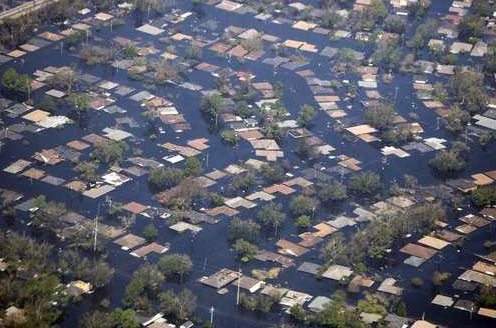
NPR.com recently published an article that really breaks down the flood insurance issue in Pinellas and Hillsborough Counties. I am republishing it here for those who are confused on the issue at hand, which is affecting Pinellas County residents more than any other county in the nation.
Millions of American property owners get flood insurance from the federal government, and a lot of them get a hefty discount. But over the past decade, the government has paid out huge amounts of money after floods, and the flood insurance program is deeply in the red.
Congress tried to fix that in 2012 by passing a law to raise insurance premiums. Now thatmove has created such uproar among property owners that Congress is trying to make the law it passed disappear.
Caught in the middle is the Federal Emergency Management Agency. FEMA provides food, shelter, money and pretty much whatever people need after a disaster. But before a disaster, FEMA helps with flood insurance — cheap flood insurance. You can buy a FEMA flood insurance policy for about half the “actuarial” rate private insurers would offer. (The actuarial rate more accurately reflects the value of a property at risk.)
But now FEMA has a problem. “We are $24 billion in debt,” says Craig Fugate, who directs FEMA. Fugate delivered that bit of news to Congress’ House Financial Services Committee in Washington, D.C., recently, as he tried to make the case for raising insurance rates.
A string of hurricanes and floods over the past decade has drained FEMA’s insurance fund. Meanwhile, people keep rebuilding in flood zones, in part because FEMA offers cut-rate prices on one-fifth of its policies. At the hearing, Fugate made it clear that this is bad policy: “The moral hazard of subsidizing risk is, we’re going to rebuild right where we were, just the way it was, and we’re going to get wiped out.”
The weird thing in this case is that Fugate was trying to convince Congress not to undo what it had just done. The 2012 law Congress passed — the Biggert-Waters Flood Insurance Reform Act — instructed FEMA to charge more realistic insurance rates that are in keeping with the rates private companies would charge. Congress said, in effect, “It’s OK to stop subsidizing those policies.”
So FEMA did just that. In 2013, it began phasing in higher premiums — mostly for second homes and for properties that have changed hands since then. In some cases, premiums went up by thousands of dollars.
Right away, the phones in Congress started ringing — ringing so much so that Congress called Fugate in to demand a stop to the very law it had passed. Among the most outraged was Maxine Waters — the co-sponsor of the Biggert-Water’s Act. At the hearing, Waters described her law as “well-meaning,” and then scolded Fugate for not coming to Congress earlier to explain just how high the premium increases would go (though they were specifically called for in the Biggert-Waters Act).
“Let me just say,” she told Fugate, “all of the harm that has been caused to thousands of people across the country —[who] are calling us, [who] are going to lose their homes, [who] are placed in this position — is just unconscionable.”
FEMA’s Fugate told Waters he doesn’t think much of this plan. “If we are going to continue to do this,” he explained, “if we wait until all the maps are updated, it will indefinitely delay implementation.”
“It is buyer’s remorse by the lawmakers,” says Stephen Ellis, who monitors the ups and downs of flood insurance for a group called Taxpayers for Common Sense. “I mean, they did the right thing,” he says. “And then that kind of outraged some of their constituents, who have howled quite loudly, and now they’re talking about undoing those reforms.”
Ellis says subsidized insurance from FEMA means taxpayers are footing part of the bill for people who choose to live in flood zones. Moreover, he says, artificially low premiums actually encourage people to rebuild where they probably shouldn’t.
As Ellis sees it, Congress is saying, in essence, ” ‘Why didn’t you protect us from ourselves? Why didn’t you tell us we were doing responsible reforms that were actually going to cost people money and have a bit of pain involved because that’s what has to happen?’ ”
Ellis says the Biggert-Waters act “is the necessary medicine if this [federal flood insurance] program is going to survive.” That’s a view shared by some conservative and liberal groups who argue that the federal taxpayer is subsidizing too many properties known to be at risk because they are on the coast or otherwise prone to flooding.
There’s another way to look at this issue, though — the way Gerald Galloway does. He’s an engineering professor at the University of Maryland who studies floods and advises the government on how to deal with them. Yes, Galloway says, there are flood-prone places like Louisiana that suck up a big share of FEMA’s flood money.
“But wait a second,” he says. “Thirty-five percent of our nation’s oil and gas comes from the Gulf Coast, and these people live in some form of risk.” Galloway says they need to live there to keep the oil and gas business running.
He favors not raising rates for most homeowners right now — holding off until ways can be devised to cushion the impact of higher rates in places prone to flooding. “Recognize that it is not a flood insurance program,” Galloway says. Rather, “it is a program to maintain the viability of communities and their economy.”
Meanwhile, Congress has drafted a new bill to delay the Biggert-Waters Act of 2012. Sponsors want to hold off on rate hikes while the National Academy of Sciences spends two years studying the issue. When the NAS is done, Congress would then spend a year or so reviewing that study. Given that the Biggert-Waters Act expires in 2017, that delay could solve Congress’ problem with its angry constituents.
NPR really did a great job of breaking the issue down.
To give an example of what is happening in Pinellas County – I’m personally selling my 2,500 sq. ft. home which is on water. The flood premium is $1,100 per year because the homes was built post 1960’s. The new home I’m downsizing to that is 1,600 sq. ft. and NOT on the water, built in 1955 but is in flood zone AE is going to be $3,500 a year for flood coverage. Why? The street has never flooded and there has never been a claim made in the past on the property. Most folks buying a $100,000-350,000 home can’t afford the extra $300+ a month in flood coverage, or would prefer to just buy in a non-flood zone which will devastate the market in areas like Shore Acres that are in flood zone AE.
The problem is the main reason that FEMA is in such that is such debt is from Hurricanes Katrina and Sandy, as the article mentions. None of which had anything to do with anything in Florida, particularly with Pinellas County which is suffering the most. Those of us who choose to live in flood zones, some of us have very low risks of flooding yet we pay extremely high premiums. Maybe the states that were affected by the storms are the ones that need to foot the bill. That’s my two cents –what do you think?
UPDATE: A new bill has passed the House which would bring some flood insurance relief. The Senate shot it down in its current form but is expected to pass an updated version of it. We will bring you more details on the bill as they become available.



Leave a Reply